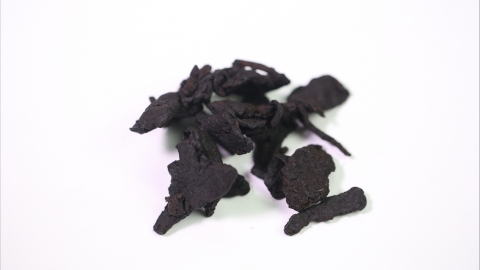What are the differences between Rehmannia glutinosa (Di Huang) and processed Rehmannia glutinosa (Shu Di Huang)?
Generally, the differences between Rehmannia (raw) and Prepared Rehmannia (cooked) include variations in properties and taste, therapeutic effects, application scope, compositional changes, and compatibility contraindications. A detailed analysis is as follows:

1. Difference in Properties and Taste: Raw Rehmannia is cold in nature, with a sweet and bitter taste, acting on the heart, liver, and kidney meridians. Prepared Rehmannia, after being steamed and sun-dried nine times, becomes slightly warm in nature, retains a sweet taste, and acts on the liver and kidney meridians. Its cold nature is reduced after processing.
2. Difference in Therapeutic Effects: Raw Rehmannia primarily clears heat, cools the blood, nourishes yin, and generates body fluids, whereas Prepared Rehmannia mainly focuses on nourishing blood, enriching yin, replenishing essence, and filling the marrow. The herb's property changes from cold to warm, and its effect shifts from clearing heat to nourishing and replenishing.
3. Difference in Application: Raw Rehmannia is suitable for conditions such as heat entering the nutrient-blood stage, hematemesis, epistaxis, and yin deficiency with internal heat syndrome. Prepared Rehmannia is commonly used for pallor due to blood deficiency, yin deficiency of the liver and kidney, and deficiency of essence and blood.
4. Compositional Changes: Raw Rehmannia contains glycosides such as catalpol, while after processing, the content of glycosides in Prepared Rehmannia decreases, and the levels of sugars and lipid-soluble components increase. As a result, its medicinal property becomes milder and its nourishing effect is enhanced.
5. Compatibility and Contraindications: Raw Rehmannia is often combined with Scrophularia root and Ophiopogon to clear heat and nourish yin, whereas Prepared Rehmannia is commonly used together with Angelica sinensis and Astragalus to nourish blood and boost qi. The two forms are used in formulas to address different syndromes.
When using Rehmannia and Prepared Rehmannia, selection should be based on the specific syndrome type. Raw Rehmannia should not be used for deficiency-cold syndromes, and Prepared Rehmannia should be used cautiously in cases of dampness and turbidity blocking the middle jiao. The nature of yin deficiency or blood deficiency must be clearly identified before administration, and self-mixing should be avoided. Processed products must strictly follow traditional processing methods and standards.





